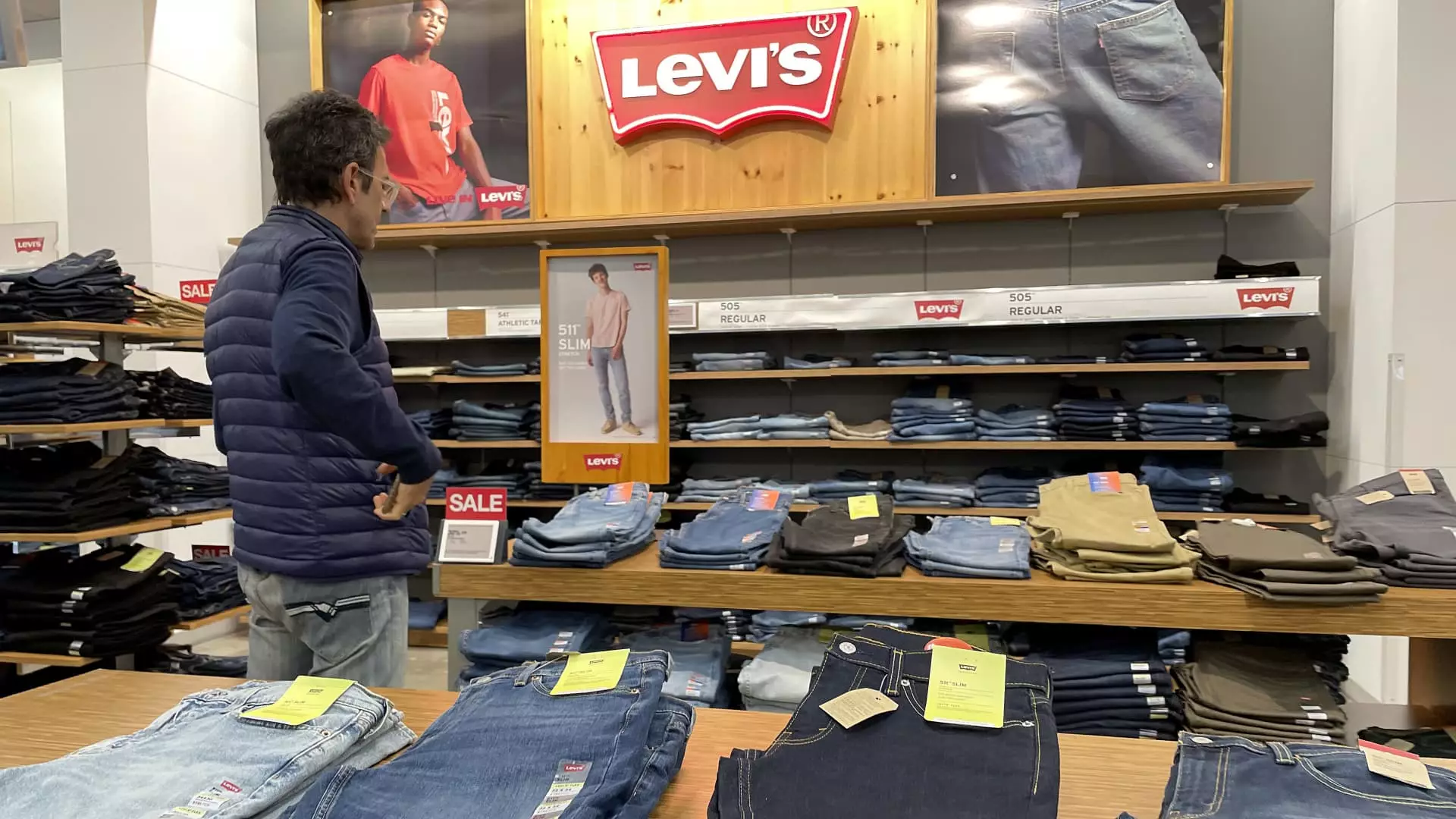In the ever-evolving world of fashion, denim remains a staple, with iconic brands like Levi Strauss & Co establishing themselves as household names. However, recent financial reports reveal that while Levi’s brand enjoys a resurgence, its sister brand, Dockers, struggles to maintain relevance. The company’s performance raises questions about brand identity, market strategy, and the shifting consumer preferences that define contemporary fashion.
Financial Overview: A Tale of Two Brands
Levi Strauss recently announced a mixed bag of financial results for its fiscal third quarter, sparking investor concern and disappointment, especially as its overall revenue failed to meet Wall Street expectations. While Levi’s sales rose by 5%—the most significant growth in two years—total revenue stagnated at $1.52 billion, falling short of the anticipated $1.55 billion. The company’s net income of $20.7 million, or 5 cents per share, illustrates a year-on-year improvement, yet the decline in share prices of more than 8% post-announcement indicates a lack of confidence in its broader strategy.
Despite positive earnings of 33 cents per share, exceeding expectations of 31 cents, the stagnation in revenue growth is concerning. Furthermore, as Levi reinstates its full-year earnings guidance, the slight reduction in its revenue forecast—from an expected 1-3% growth to just 1%—outlines the challenges facing the business landscape and how dependent Levi’s is on the success of its flagship brand.
Originally launched in 1986 as a prime alternative to denim with khaki offerings, Dockers has faced an unfortunate descent into obscurity. Once celebrated in the ’90s and ’00s, the brand now shows a staggering 15% drop in sales, amounting to $73.7 million. This decline signals a disconnection with modern consumer trends, as casual and athleisure wear continues to dominate. To address this underperformance and the overlapping product lines with Levi’s, the company is exploring the possibility of divesting Dockers, a decision that may free up resources and focus for both brands.
Finance chief Harmit Singh’s remarks suggest that divesting Dockers could enhance Levi’s overall margins and stabilize revenue streams. With a clear demarcation in brand identity, Levi’s aims to refine its strategy, allowing each brand to focus on maximizing its distinct value proposition.
In the face of varied performance across its brands, Levi’s has pivoted towards a direct-to-consumer approach, a strategy reflected in its growing profitability. The company’s gross margin saw a notable rise of 4.4 percentage points, attributed to a combination of direct selling initiatives, declining cotton prices, and improved product offerings. This strategic shift allows for higher profit margins while enhancing customer relationships through direct engagement and targeted marketing.
In recent quarters, Levi’s direct sales surged by about 10%, bolstered by a robust e-commerce segment that marked a notable 16% increase. Currently, direct sales account for 44% of total revenue, highlighting the company’s definite goal of elevating that figure even closer to 55%. Such a focus not only promises improved profitability but also allows the brand to better respond to shifting consumer dynamics.
Levi’s efforts to revitalize its market presence include innovative partnerships, notably with cultural icons such as Beyoncé. The recent collaboration aims to celebrate the brand’s heritage and iconic pieces, aligning with contemporary pop culture. Executive insights showcase a commitment to keeping Levi’s front and center within cultural conversations, enhancing brand loyalty and consumer interest.
This strategic decision to partner with influential figures is indicative of broader marketing trends in the fashion industry, where authenticity and cultural relevance are paramount. As Levi’s navigates this relationship, the company aims to capture the essence of its roots—encapsulating an enduring style that has transcended generational shifts.
Levi Strauss & Co stands at a crossroads, reflecting a microcosm of challenges in today’s retail landscape. With Levi’s brand buoyed by innovation, a revitalized marketing strategy, and a commitment to direct consumer engagement, the company is positioned well to thrive. However, the fate of Dockers presents pressing questions about brand coherence and the risks of trying to cater to a market that has moved on.
As Levi’s repositions itself in an intensely competitive market, its ability to leverage its rich heritage while embracing modern consumer preferences will ultimately dictate its future success. Balancing these dynamics will be crucial as the brand pursues growth and sustainability in this new fashion frontier.

